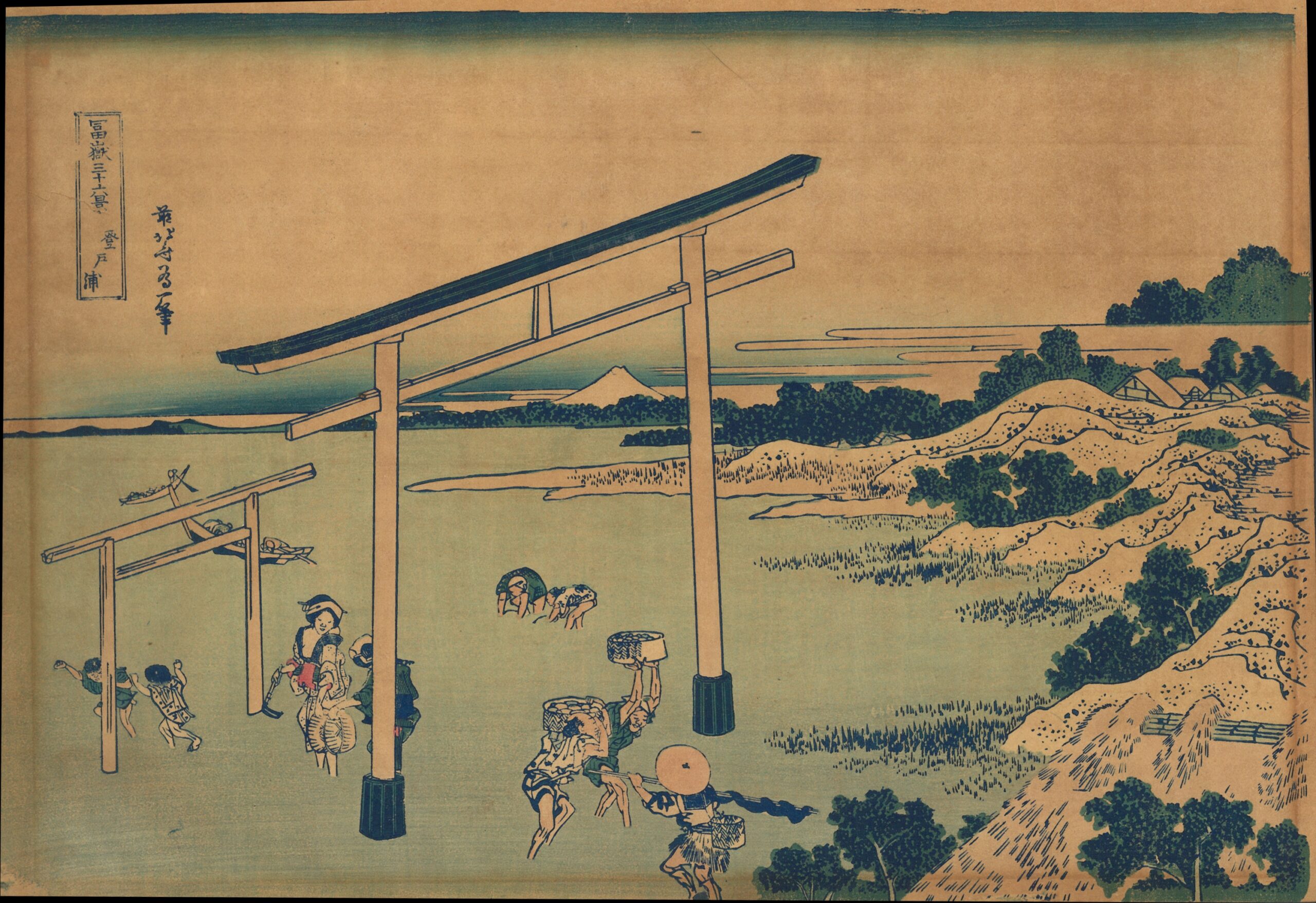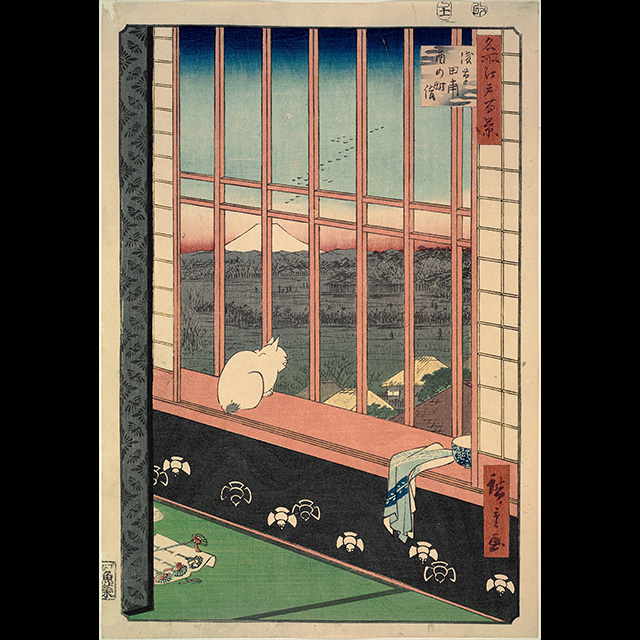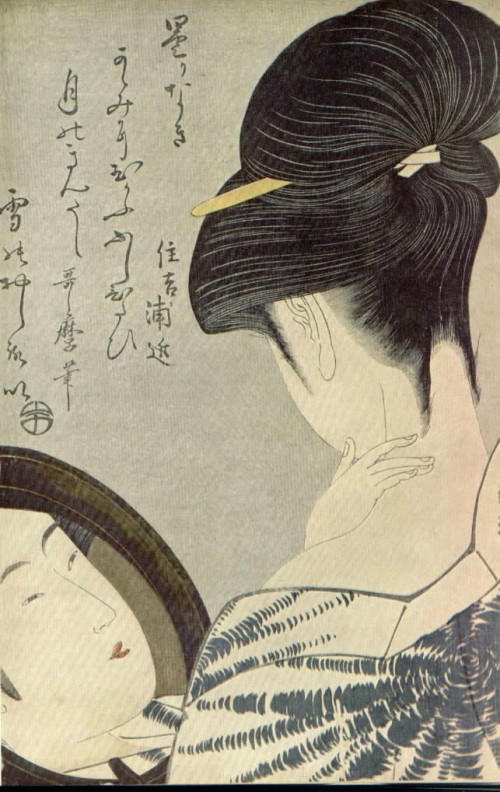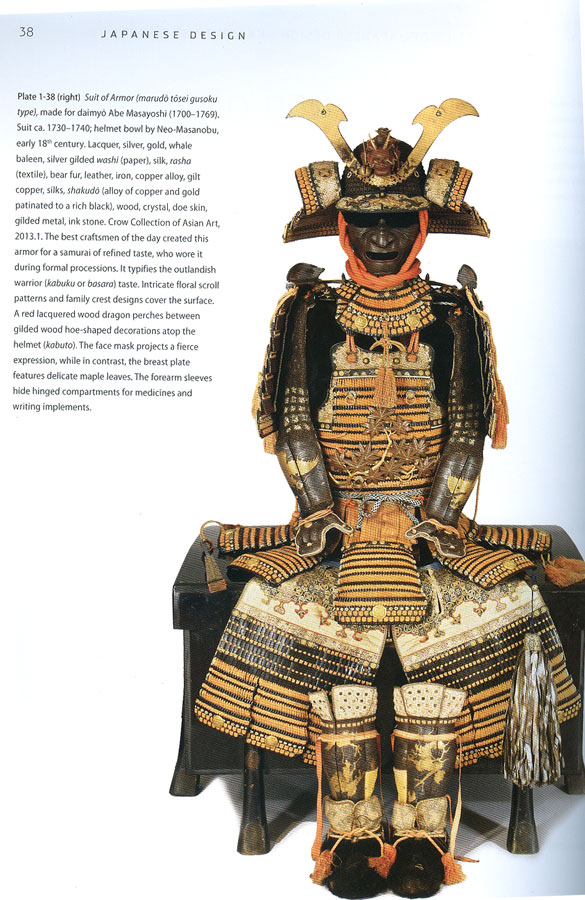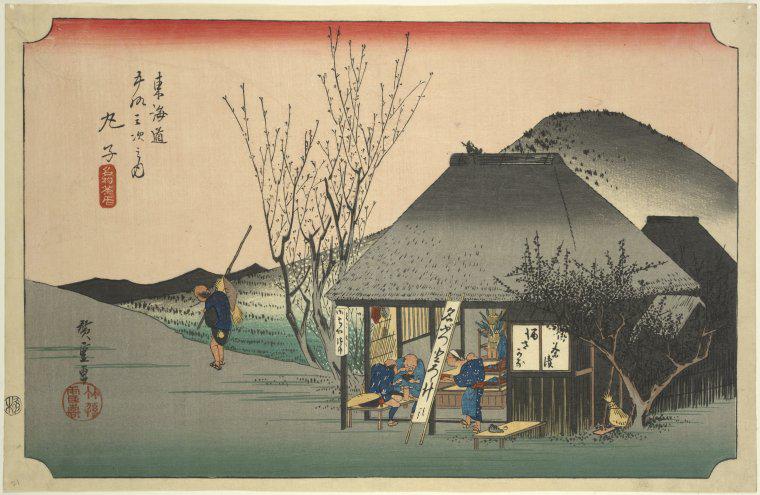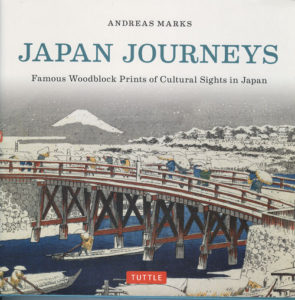
Woodblock prints, for those of you who don’t know, are one of the Japanese art styles manga and anime pull from. Woodblock prints are generally divided into two categories, ukiyo-e and shin hanga.Ukiyo-e often depict geisha, actors, and sometimes sexual elements. They were popular through much of the Tokugawa Era. Shin hanga prints date to the early 1900s and often show landscapes and scenes from life. While not as accurate as photographs for depicting events, ukiyo-e and shin hanga are useful to see how people lived. They also show us what concerned people at the time (or at least the artist) and how the world was viewed.
Marks collects works from famous artists like Utagawa Hiroshige and Katsushika Hokusai along with rare prints destined to become paper fans.

The organization of the book was like taking a tour of Japan’s prime historical locations and time periods. The book organizes prints by location with Tokyo and the surrounding area being the main focus. The reader visits Nihonbashi and Meiji era railroads before taking stops outside of Tokyo. The prints whisk the reader off to Kyoto and other sights of Japan.
The print quality of the book is excellent. Colors are vibrant and the paper has a pleasant feel. I know. Talking about the feel of a book’s paper in the digital age seems a little odd. I enjoy the feel of good paper between my fingers while I read. Some books have cheap feeling paper that ruins the reading experience. It feels as if the book will come apart in your hands. This is particularly disappointing in art books. Luckily, Japan Journeys doesn’t have this problem.
Unlike some art books, Japan Journeys is a manageable size. While some prints are split across two pages, the size works better than over sized art books. Those are just awkward. I own several of those type that contain the drawing of Leonardo da Vinci, and they are a pain to look through. Although, they are good if you are drawing from them.
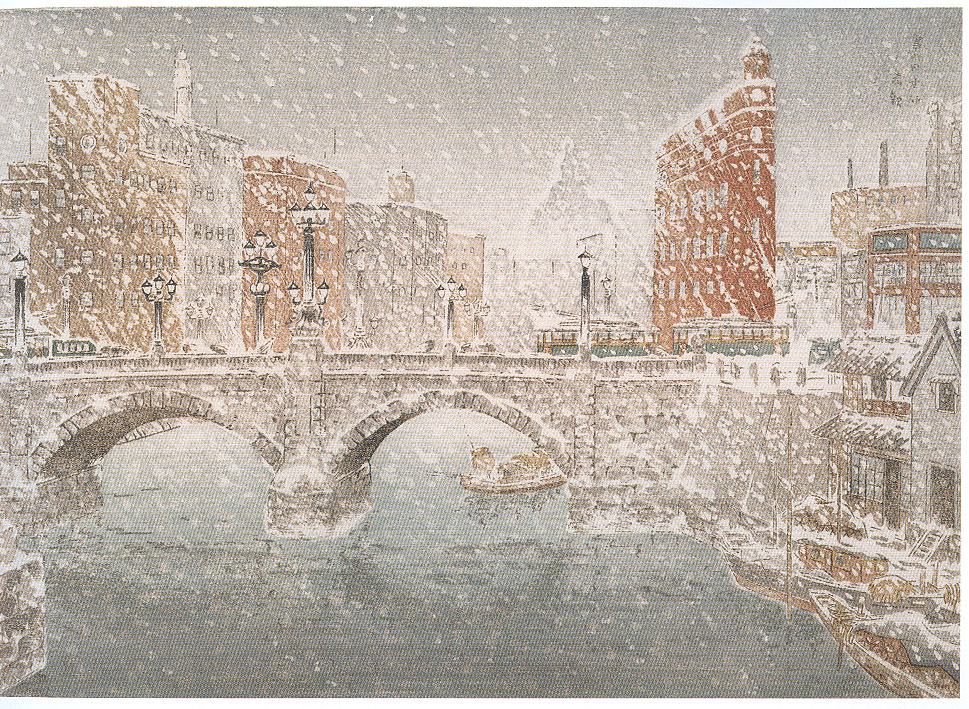
Japan Journeys has several prints that fascinated me. I am interested in transitional periods. The transition from sword to firearm, for example. Several of the prints show traditionally clothed men and women standing next to Americans and Europeans in front of steam ships and steam engines. The contrast in these prints grabs the imagination. Particularly when you consider how these prints foreshadow the fast changes Japan experienced during the Meiji Era. The prints show how uneven Japan’s transition to a modern state was. The steamships and steam engines look alien against the traditional Japanese architecture and clothing.
The book is spare on information. There are brief blurbs about each location, and why that location is important for woodblock artists. A few of the prints have explanations, but most simply have short sentences about the location the print features. While the focus of the book is the art, it feels a little too spare at times. More information about the artists or the history of the location would be welcome. The book has many spaces that want text. Of course, too much text would detract from the artwork, but Marks could have added more information.
Japan Journeys offers a nice collection of woodblock prints for artists interested in practicing the art style. The book also provides a good collection of location prints to assist in research. Finally, it is simply a book filled with beautiful images of and from Japan. Otakus truly interested in Japan should take a look at this nice introduction to ukiyo-e and shin hanga woodblock prints.
Japan Journeys: Famous Woodblock Prints of Cultural Sights in Japan
is available at Amazon and Tuttle Publishing.
